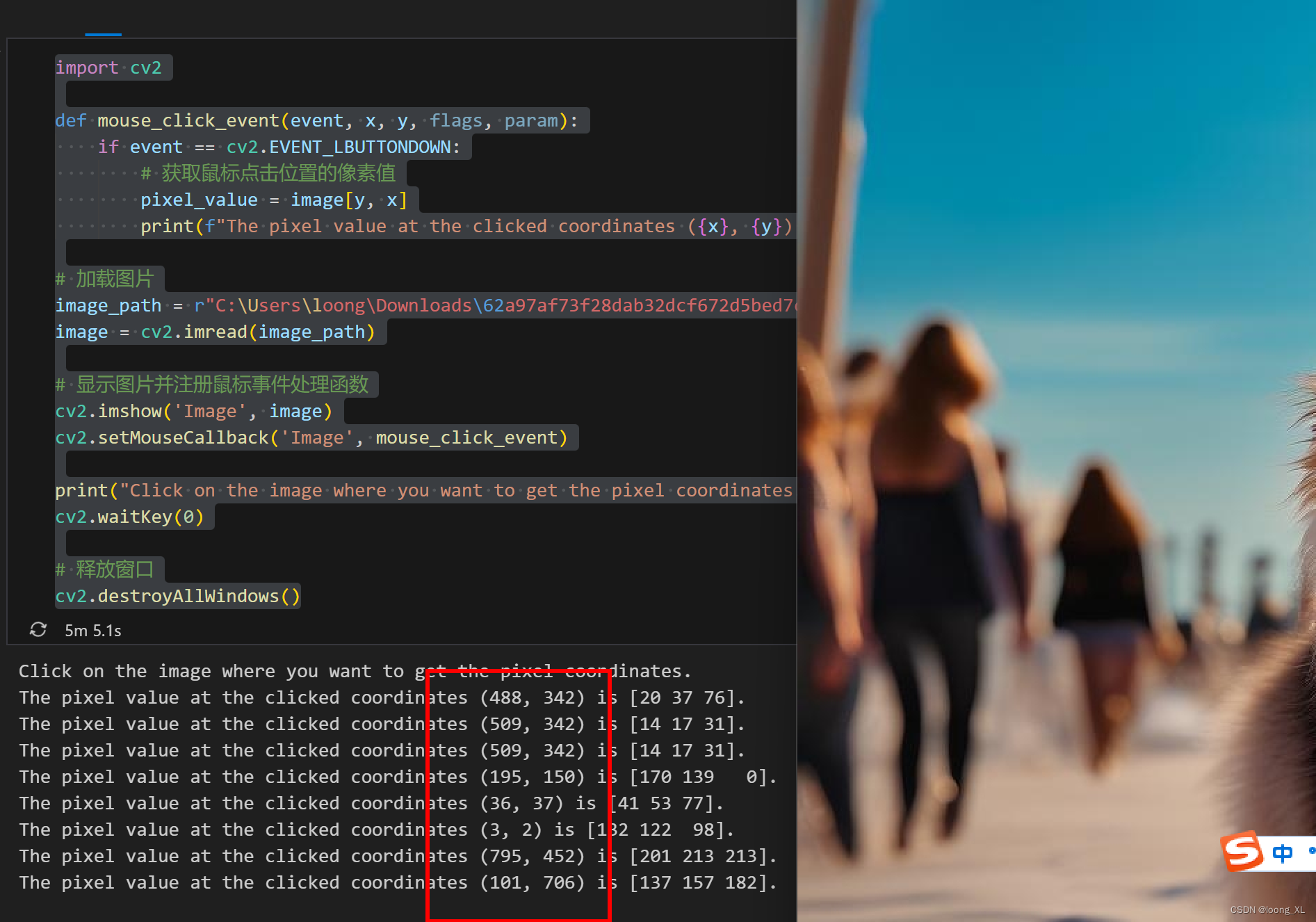目录
- 🚀 前言
- 一: 🔥 哈希表的改造
- 1.1 模板参数列表的改造
- 1.2 增加迭代器操作
- 二: 🔥 封装unordered_map和unordered_set
- 2.1 unordered_map的模拟实现:
- 2.1.1 unordered_map的测试
- 2.2 unordered_set的模拟实现
- 2.2.1 unordered_set的测试
- 三: 🔥 📖哈希表改造的完整代码及总结

🚀 前言
哈希类的实现参考上一篇文章:【C++高阶】哈希:全面剖析与深度学习
前面我们对哈希表进行了介绍并用哈希桶进行了实现!本期我们在上期的基础上对哈希表进行改造,并封装出unordered_map和unordered_set!本篇我们采用开散列的方式来模拟实现unordered。
————————————步骤—————————————
1. 实现哈希表
2. 实现 iterator 迭代器
3. 封装unordered_map和unordered_set 解决KetOfT
4. 实现 const_iterator 迭代器
5. 修改Key的问题
6. 解决operate[]
一: 🔥 哈希表的改造
1.1 模板参数列表的改造
// K: 关键码类型
// V: 不同容器V的类型不同,如果是unordered_map,V代表一个键值对,如果是 unordered_set,V 为 K
// KeyOfValue: 因为V的类型不同,通过 value 取 key 的方式就不同,详细见unordered_map/set的实现
// HF: 哈希函数仿函数对象类型,哈希函数使用除留余数法,需要将Key转换为整形数字才能取模
template<class K, class V, class KeyOfValue, class HF = DefHashF<T> >
class HashBucket;
1.2 增加迭代器操作
template<class T>
struct HashNode
{
T _data;
HashNode<T>* _next;
HashNode(const T& data)
:_data(data)
,_next(nullptr)
{}
};
// 为了实现简单,在哈希桶的迭代器类中需要用到hashBucket本身,所以我们要进行一下前置声明,并且我们在 HashTable 中也要设置一个友元(friend)
//前置声明
template<class K, class T, class KeyOfT, class Hash>
class HashTable;
template<class K, class T, class Ptr, class Ref, class KeyOfT, class Hash>
struct HTIterator
{
typedef HashNode<T> Node;
typedef HTIterator<K, T, Ptr, Ref, KeyOfT, Hash> Self;
Node* _node;
const HashTable<K, T, KeyOfT, Hash>* _pht;
// 构造函数不仅需要节点的指针,还需要哈希表对象的指针
HTIterator(Node* node, const HashTable<K, T, KeyOfT, Hash>* pht)
:_node(node)
, _pht(pht)
{}
Ref operator*()
{
return _node->_data;
}
Ptr operator->()
{
return &_node->_data;
}
bool operator!=(const Self& s)
{
return _node != s._node;
}
Self& operator++()
{
// 如果当前桶没有走完就继续走
if (_node->_next)
{
// 当前桶还有节点
_node = _node->_next;
}
else { // 遍历下一个不为空的桶
KeyOfT kot;
Hash hs;
size_t hashi = hs(kot(_node->_data)) % _pht->_tables.size(); // 计算桶的位置
++hashi; // 注意这里必须要++hashi 调试了好久 因为如果不++ 旧的桶遍历完了会一直重复遍历死循环 当_node->next为空时必须++hashi
while (hashi < _pht->_tables.size())
{
if (_pht->_tables[hashi])
{
break;
}
++hashi;
}
if (hashi == _pht->_tables.size())
{
_node = nullptr; // end()
}
else {
_node = _pht->_tables[hashi];
}
}
return *this;
}
};
二: 🔥 封装unordered_map和unordered_set
2.1 unordered_map的模拟实现:
#pragma once
#include "HashTable.h"
namespace bit
{
template<class K, class V, class Hash = HashFunc<K>>
class unordered_map
{
struct MapKeyOfT
{
const K& operator()(const pair<K, V>& kv)
{
return kv.first;
}
};
public:
typedef typename hash_bucket::HashTable<K, pair<const K, V>, MapKeyOfT, Hash>::Iterator iterator;
typedef typename hash_bucket::HashTable<K, pair<const K, V>, MapKeyOfT, Hash>::ConstIterator const_iterator;
iterator begin()
{
return _ht.Begin();
}
iterator end()
{
return _ht.End();
}
const_iterator begin() const
{
return _ht.Begin();
}
const_iterator end() const
{
return _ht.End();
}
pair<iterator, bool> insert(const pair<K, V>& kv)
{
return _ht.Insert(kv);
}
V& operator[](const K& key)
{
pair<iterator, bool> ret = _ht.Insert(make_pair(key, V()));
return ret.first->second;
}
iterator find(const K& key)
{
return _ht.Find(key);
}
bool Erase(const K& key)
{
return _ht.Erase(key);
}
private:
hash_bucket::HashTable<K, pair<const K, V>, MapKeyOfT, Hash> _ht;
};
}
2.1.1 unordered_map的测试
void test_map()
{
unordered_map<string, string> dict;
dict.insert({ "sort", "排序" });
dict.insert({ "left", "左边" });
dict.insert({ "right", "右边" });
dict["left"] = "左边,剩余";
dict["insert"] = "插入";
dict["string"];
unordered_map<string, string>::iterator it = dict.begin();
while (it != dict.end())
{
// 不能修改first,可以修改second
// it->first += 'x';
it->second += 'x';
cout << it->first << ":" << it->second << endl;
++it;
}
cout << endl;
}
2.2 unordered_set的模拟实现
#pragma once
#include "HashTable.h"
namespace bit
{
template<class K, class Hash = HashFunc<K>>
class unordered_set
{
struct SetKeyOfT
{
const K& operator()(const K& key)
{
return key;
}
};
public:
typedef typename hash_bucket::HashTable<K, const K, SetKeyOfT, Hash>::Iterator iterator;
typedef typename hash_bucket::HashTable<K, const K, SetKeyOfT, Hash>::ConstIterator const_iterator;
iterator begin()
{
return _ht.Begin();
}
iterator end()
{
return _ht.End();
}
const_iterator begin() const
{
return _ht.Begin();
}
const_iterator end() const
{
return _ht.End();
}
pair<iterator, bool> insert(const K& key)
{
return _ht.Insert(key);
}
iterator find(const K& key)
{
return _ht.Find(key);
}
bool Erase(const K& key)
{
return _ht.Erase(key);
}
private:
hash_bucket::HashTable<K, const K, SetKeyOfT, Hash> _ht; // set不允许修改key 所以+const
};
void Print(const unordered_set<int>& s)
{
unordered_set<int>::const_iterator it = s.begin();
while (it != s.end())
{
cout << *it << " ";
++it;
}
cout << endl;
}
struct Date
{
int _year;
int _month;
int _day;
bool operator==(const Date& d) const
{
return _year == d._year && _month == d._month && _day == d._day;
}
};
// 针对date类型专门设计的哈希函数
struct HashDate
{
size_t operator()(const Date& key)
{
return (key._year * 31 + key._month) * 31 + key._day;
}
};
}

2.2.1 unordered_set的测试
void Print(const unordered_set<int>& s)
{
unordered_set<int>::const_iterator it = s.begin();
while (it != s.end())
{
cout << *it << " ";
++it;
}
cout << endl;
}
struct Date
{
int _year;
int _month;
int _day;
bool operator==(const Date& d) const
{
return _year == d._year && _month == d._month && _day == d._day;
}
};
// 针对date类型专门设计的哈希函数
struct HashDate
{
size_t operator()(const Date& key)
{
return (key._year * 31 + key._month) * 31 + key._day;
}
};
void test_set()
{
unordered_set<int> s;
int a[] = { 4, 2, 6, 1, 3, 5, 15, 7, 16, 14, 3, 3,15 };
for (auto e : a)
{
s.insert(e);
}
for (auto e : s)
{
cout << e << " ";
}
cout << endl;
unordered_set<int>::iterator it = s.begin();
while (it != s.end())
{
cout << *it << " ";
++it;
}
cout << endl;
unordered_set<Date, HashDate> us;
us.insert({ 2023, 1, 1 });
us.insert({ 2024, 1, 1 });
Print(s);
}

三: 🔥 📖哈希表改造的完整代码及总结
#pragma once
#include <iostream>
#include <algorithm>
#include <cstring>
#include <vector>
#include <map>
using namespace std;
template<class K>
struct HashFunc
{
size_t operator()(const K& key)
{
return (size_t)key;
}
};
// 特化
template<>
struct HashFunc<string>
{
size_t operator()(const string& key)
{
size_t hash = 0;
for (auto e : key)
{
hash *= 31;
hash += e;
}
return hash;
}
};
enum State
{
EXIST,
EMPTY,
DELETE
};
namespace hash_bucket
{
template<class T>
struct HashNode
{
T _data;
HashNode<T>* _next;
HashNode(const T& data)
:_data(data)
,_next(nullptr)
{}
};
// 前置声明 解决相互依赖的问题
template<class K, class T, class KeyOfT, class Hash>
class HashTable;
template<class K, class T, class Ptr, class Ref, class KeyOfT, class Hash>
struct HTIterator
{
typedef HashNode<T> Node;
typedef HTIterator<K, T, Ptr, Ref, KeyOfT, Hash> Self;
Node* _node;
const HashTable<K, T, KeyOfT, Hash>* _pht;
// 构造函数不仅需要节点的指针,还需要哈希表对象的指针
HTIterator(Node* node, const HashTable<K, T, KeyOfT, Hash>* pht)
:_node(node)
, _pht(pht)
{}
Ref operator*()
{
return _node->_data;
}
Ptr operator->()
{
return &_node->_data;
}
bool operator!=(const Self& s)
{
return _node != s._node;
}
Self& operator++()
{
// 如果当前桶没有走完就继续走
if (_node->_next)
{
// 当前桶还有节点
_node = _node->_next;
}
else { // 遍历下一个不为空的桶
KeyOfT kot;
Hash hs;
size_t hashi = hs(kot(_node->_data)) % _pht->_tables.size(); // 计算桶的位置
++hashi; // 注意这里必须要++hashi 调试了好久 因为如果不++ 旧的桶遍历完了会一直重复遍历死循环 当_node->next为空时必须++hashi
while (hashi < _pht->_tables.size())
{
if (_pht->_tables[hashi])
{
break;
}
++hashi;
}
if (hashi == _pht->_tables.size())
{
_node = nullptr; // end()
}
else {
_node = _pht->_tables[hashi];
}
}
return *this;
}
};
template<class K, class T, class KeyOfT, class Hash>
class HashTable
{
// 类模板的友元声明
template<class K, class T, class Ptr, class Ref, class KeyOfT, class Hash>
friend struct HTIterator;
typedef HashNode<T> Node;
public:
typedef HTIterator<K, T, T*, T&, KeyOfT, Hash> Iterator;
typedef HTIterator<K, T,const T*, const T&, KeyOfT, Hash> ConstIterator;
Iterator Begin()
{
if (_n == 0)
return End();
for (size_t i = 0; i < _tables.size(); i++)
{
Node* cur = _tables[i];
if (cur)
{
return Iterator(cur, this); // 太妙了, this就是哈希表对象的指针
}
}
return End();
}
Iterator End()
{
return Iterator(nullptr, this);
}
ConstIterator Begin() const
{
if (_n == 0)
return End();
for (size_t i = 0; i < _tables.size(); i++)
{
Node* cur = _tables[i];
if (cur)
{
return ConstIterator(cur, this); // 太妙了, this就是哈希表对象的指针
}
}
return End();
}
ConstIterator End() const
{
return ConstIterator(nullptr, this);
}
HashTable()
{
_tables.resize(10, nullptr);
}
~HashTable()
{
// 依次把每个哈希桶释放
for (size_t i = 0; i < _tables.size(); i++)
{
Node* cur = _tables[i];
while (cur)
{
Node* next = cur->_next;
delete cur;
cur = next;
}
_tables[i] = nullptr;
}
}
pair<Iterator, bool> Insert(const T& data)
{
KeyOfT kot;
Iterator it = Find(kot(data));
if (Find(kot(data)) != End())
return make_pair(it, false);
Hash hs;
size_t hashi = hs(kot(data)) % _tables.size();
// 负载因子==1扩容
if (_n == _tables.size())
{
/*HashTable<K, V> newHT;
newHT._tables.resize(_tables.size() * 2);
for (size_t i = 0; i < _tables.size(); i++)
{
Node* cur = _tables[i];
while (cur)
{
newHT.Insert(cur->_kv);
cur = cur->_next;
}
}
_tables.swap(newHT._tables);*/
vector<Node*> newtables(_tables.size() * 2, nullptr);
for (size_t i = 0; i < _tables.size(); i++)
{
Node* cur = _tables[i];
while (cur)
{
Node* next = cur->_next;
// 旧表中节点,重新映射到新表中的位置
size_t hashi = hs(kot(cur->_data)) % newtables.size();
// 头插到新表
cur->_next = newtables[hashi];
newtables[hashi] = cur;
cur = next;
}
_tables[i] = nullptr;
}
_tables.swap(newtables);
}
Node* newnode = new Node(data);
newnode->_next = _tables[hashi];
_tables[hashi] = newnode;
++_n;
return make_pair(Iterator(newnode, this), true);
}
Iterator Find(const K& key)
{
KeyOfT kot;
Hash hs;
size_t hashi = hs(key) % _tables.size();
Node* cur = _tables[hashi];
while (cur)
{
if (kot(cur->_data) == key)
{
return Iterator(cur, this);
}
cur = cur->_next;
}
return End();
}
bool Erase(const K& key)
{
KeyOfT kot;
Hash hs;
size_t hashi = hs(key) % _tables.size();
Node* prev = nullptr;
Node* cur = _tables[hashi];
while (cur)
{
if (kot(cur->_data) == key)
{
if (prev == nullptr)
{
_tables[hashi] = cur->_next;
}
else
{
prev->_next = cur->_next;
}
delete cur;
--_n;
return true;
}
prev = cur;
cur = cur->_next;
}
return false;
}
private:
vector<Node*> _tables; // 指针数组
size_t _n = 0; // 存储数据的个数
};
}
以上就是本文的全部内容,需要我们好好掌握,觉得这篇博客对你有帮助的,可以点赞收藏关注支持一波~😉




















